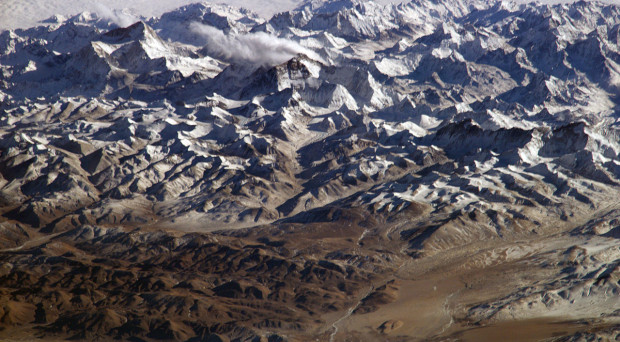
Life at the extremes
At high altitude, life is a challenge. Animals who make their home far above sea level have to cope with a lack of oxygen, extremely cold temperatures and high levels of harsh UV radiation, all while still contending with the same problems faced by animals living at lower altitudes.
This raises the question of how animals have adapted to living in these environments. A number of recent studies have used next-generation sequencing techniques to investigate the genetic changes species have undergone in adapting to high altitude life.
However, these studies have mostly been conducted on warm-blooded birds and mammals, such as yaks and ground tits. Little research has been conducted on cold-blooded animals like reptiles.
This is despite the likelihood that the adaptations required for cold-blooded species to live at high altitudes will be even greater than those made by warm-blooded species. Cold-blooded animals have less direct control over their metabolism, making dealing with cold temperatures and low oxygen levels more challenging, while their need to bask in sunlight to regulate their temperatures will increase thier exposure to the damaging UV radiation at these altitudes.
The Roof of the World
These gaps in our knowledge led a team of researchers at China’s Lanzhou University, headed by Dr Qiang Qiu, to study the toad-headed sand lizard Phrynocephalus erythrurus. This lizard lives 4500m above sea level on the Tibetan plateau, an area known as the “Roof of the World”. No other lizard is known to live at such high altitudes, making P. erythrurus an ideal species to study how lizards adapt to such habitats.
The researchers gathered several adult lizards from the wild and sampled tissues from a number of different body parts. The RNA expressed in these tissues was sequenced to create a transcriptome for each tissue, revealing what genes are expressed in different body parts and at what level.
These techniques were then repeated on several individuals of another species of toad-headed sand lizard, Phrynocephalus putjatia. This species is closely related to P.erythrurus but lives in the Gobi desert at a (relatively) low altitude of 2500m above sea level.
By comparing gene expression in the two close relatives, the researchers hypothesised that they could determine which genes have been involved in the adaptation of P.erythrurus to high altitude life.
Adapting to altitude
Genes involved in adaptation to high altitudes would be expected to show a greater level of change between the two species. By determining the likely function of these genes by comparisons with genetic databases, the researchers were able to estimate which types of genes are key to living at high altitude.
Their results, published in BMC Evolutionary Biology, provide evidence of accelerated evolution in genes linked to three functional categories: oxygen transport, energy metabolism and DNA damage repair.
Increasing the capacity to take up and transport oxygen would help P.erythrurus in dealing with the lower oxygen levels at high altitudes; alterations to its metabolic rate would complement this by making oxygen use more efficient. Increased levels of DNA repair molecules could be an adaptation to dealing with the damage caused by greater exposure to UV radiation at high altitudes.
These results suggest P.erythrurus has undergone substantial evolutionary change in response to the challenge of high altitude life. However, the researchers are quick to caution against overstating their conclusions. As they rightly say, this approach to identifying genes undergoing evolutionary change can produce false-positives and encourage the creation of ‘just-so stories’. Clearly, additional functional and physiological experiments are required to fully substantiate these findings.
A cold-blooded response
That said, these genetic changes are reflected in other studies of adaptation to high altitude. Most notably, at the same time the Lanzhou University researchers were conducting their study, another group of Chinese researchers were carrying out very similar work on Phrynocephalus lizards.
They also compared the transcriptomes of two closely related Phrynocephalus species, one living at high altitude, the other at low altitude (in this case, approximately 3500m and 1000m above sea level respectively). Their recently published results also indicate adaptive evolution of genes associated with responses to lack of oxygen and UV damage. Similarly, the only other such study on a cold-blooded animal, conducted on two species of frog, found analogous genetic differences between high and low altitude species.
Further research will be necessary to fully uncover how cold-blooded animals, usually associated with humid tropics or scorching deserts, have adapted to the unique challenges of living at high altitudes. However these new studies do demonstrate the power of both genetic sequencing techniques and comparative biology in answering these tricky questions.
Comments